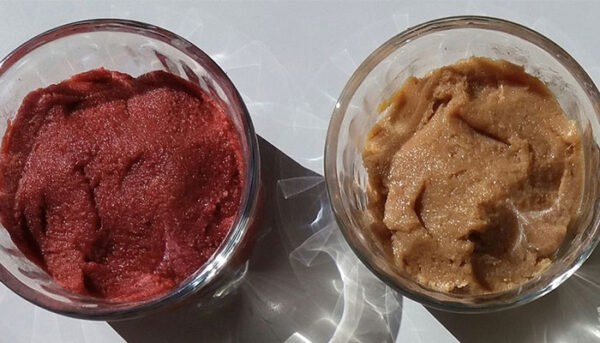In the tapestry of Mediterranean cuisine, few ingredients evoke the sea’s essence as vividly as tarama. This salted and cured fish roe — luxurious yet humble — has been a staple across Greece, Turkey, and the Levant for generations. Known most famously as the foundation of taramasalata, the silky dip that graces meze tables across the region, tarama represents both tradition and taste in perfect harmony.
From Roe to Ritual
The word tarama is of Turkish origin, meaning simply “fish roe,” while in Greece it is also known as chaviari, a name reminiscent of caviar. Its preparation is deceptively simple yet intensely artisanal: the roe of cod, carp, or grey mullet is salted and left to mature, developing a complex marine flavour that’s both briny and creamy.
Once cured, the roe is transformed — sometimes mixed with olive oil, lemon juice, and a starchy base such as bread, potato, or almonds — into the paste known as tarama. This mixture serves as the backbone for a variety of dishes, but none as beloved as taramasalata.
Red and White Tarama: Tradition, Taste, and Truth
In shops and markets across Greece and beyond, tarama is sold in two main varieties — white and red — each with its own story, flavour, and loyal following.
White tarama is the natural, uncoloured form of salted fish roe. It’s usually made from grey mullet or cod roe and prized for its delicate, refined taste and smooth, creamy texture. The flavour is subtle — less salty and more nuanced — making it the preferred choice for traditional taramasalata. When blended with olive oil and lemon juice, white tarama produces a pale, ivory-colored dip that highlights the freshness of the ingredients without distraction.
Red tarama, on the other hand, is typically artificially colored, often with natural dyes or food colouring, to achieve its distinctive pink or coral hue. This practice began decades ago, mainly for commercial appeal — bright colours drew attention in fish markets and later in supermarket displays. Red tarama is also saltier and more robust in flavour, as it often uses roe that has been cured longer. Many Greeks associate it with nostalgic home recipes and the taramasalata served in classic tavernas.
While purists tend to favour the white variety for its authenticity and clean flavour, the red version has become a cultural icon in its own right — instantly recognisable and evocative of family gatherings, seaside meals, and the first day of Lent.
Ultimately, the choice between red and white tarama comes down to personal preference:
-
White tarama for purity and balance.
-
Red tarama for tradition and intensity.
Both carry the unmistakable taste of the Mediterranean — a reminder that even small differences in preparation can reflect centuries of local history and taste.
The Art of Taramasalata
Taramasalata (ταραμοσαλάτα) is where simplicity meets sophistication. Traditionally prepared by emulsifying tarama with olive oil, lemon juice, and bread crumbs or mashed potatoes, it achieves a light, mousse-like texture that’s both indulgent and refreshing.
Many versions include subtle additions — a touch of onion, a hint of garlic, or even vinegar instead of lemon — reflecting local and family traditions passed down through generations. Despite the bright pink versions often seen on supermarket shelves, authentic taramasalata is off-white or pale beige, the natural hue of the roe itself.
Served with warm pita, fresh vegetables, or crusty bread, taramasalata is a cornerstone of the meze — the shared-plate tradition that defines the convivial spirit of Mediterranean dining.
Tradition on the Table
Across Greece, tarama and its variations take centre stage on Clean Monday (Ash Monday), marking the beginning of Lent. On this day, families gather to enjoy a spread of fasting dishes — olives, pickled vegetables, lagana bread, and, of course, taramasalata. In some regions, cooks also prepare taramokeftedes, or fish roe fritters, giving the ingredient a warm, hearty twist.
Two main types of tarama are found in the market: white, prized for its mild, natural flavour, and red, often colored and saltier. While the former appeals to purists, the latter remains a nostalgic favorite for many, recalling old family meals and local tavern tables.
A Nutrient-Rich Delicacy
Beyond its culinary appeal, tarama is a nutritional powerhouse. Fish roe is naturally rich in high-quality protein, omega-3 fatty acids, and vitamins A and D, which contribute to brain and heart health.
Still, it is a food best enjoyed in moderation. High in both fat and sodium, tarama rewards those who savour it slowly, in small portions — much like the leisurely pace of the meals it accompanies.
| Nutrient (per 100 g) | Approximate Value |
|---|---|
| Calories | 250–300 kcal |
| Protein | 15–20 g |
| Fat | 20–25 g |
| Sodium | High |
| Omega-3s | Excellent source |
Preserving the Flavour
Proper storage is essential to maintain tarama’s delicate flavour. The pure roe should be kept refrigerated and tightly sealed, protected from air exposure that can alter its taste. Once opened, it’s best consumed within three to five days.
Taramasalata, meanwhile, keeps well for about a week in the fridge, but freezing is discouraged — it breaks the emulsion and ruins the dip’s signature smoothness.
A Living Link to the Sea
Tarama embodies the Mediterranean’s enduring bond with the sea — a connection woven through history, faith, and flavour. It’s a food that transcends its humble origins, reminding us that true culinary beauty often lies in simplicity.
From the fishermen who first salted the roe to the families who still share it at their tables, tarama remains both a taste of the sea and a symbol of heritage. This delicacy continues to nourish body, memory, and culture alike.




